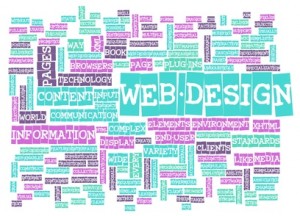“Though art may be subjective, Web design is not. In Web design, there is a right way and a wrong way to approach layout, navigation, copy, white space, and other critical website components.”—Andrew Follett
 A lot of what I do in my job is education.
A lot of what I do in my job is education.
Sure, I spend time actually designing websites, writing code and such. That kind of stuff makes up the bulk of my job, without a doubt. But a lot of that work wouldn’t happen without paving the way with information. This is a little-known truth of most web designers: educating the client is often one of the first steps of the design process.
Back in the early day of the Web, a lot of web design work happened in a vacuum, free of real guidelines and data. Fortunately, the medium has matured, and this is no longer the case. However, this is often news to many clients that web designers and developers work with. Many clients still believe their sites need outdated conventions like “home” buttons, or think that drop-down menus will solve all of their site architecture issues (here’s why they don’t). Some think they need to have redundant navigation, with identical links at the top and the bottom. If the idea came from 1999, I’ve probably heard it.
Web work is no longer the field it was even 10 years ago. Having someone on your library’s staff who knew some HTML used to be sufficient. If they could do some scripting, that was an added bonus. But web designers and developers have to know so much more now, and the field is much more specialized. When was the last time that HTML-knowing librarian spent some time reviewing usability and/or accessibility literature? Do they know and use W3C standards? Did they know there were standards for code? What about SEO? CMSs? Do they know what these things are and why they’re important? The list of skills for a modern-day webworker is incredibly long and intimidating for some. It’s enough to even make my head spin.
Can your library get by without knowing about these things? That answer is “maybe,” with a large serving of “probably not.” Web design now has rules, not anecdotes.
What does this mean to me, Laura?
- If you’re doing this kind of work in your own library, you may be struggling with some of the same issues: keeping up, and then passing that knowledge onto the people who make decisions about the website.The good news is that there’s a lot of real expertise out there now to back you up. Subscribe to updates from Jakob Nielsen’s site, http://www.useit.com to get the latest data on usability. Nielsen also has an extensive archive of all the previous research he and his company have done in this area. Plan to spend a few hours there, at least.
- It may be time to admit (finally?) that modern web design has moved out of the realm of that HTML-knowing librarian. Sure, you can hire OPLIN to do your library’s website, or get some other kind of outside help. (It doesn’t have to be me.) But times have changed, and libraries need to realize that modern websites may be beyond in-house capability.
- If you’re working with an outside developer (or an inside one who has real knowledge), listen. It can be all too easy to dismiss what they know. Just because XYZ Library did it, doesn’t make it right. That library may be operating under the same outdated or mythologically-based assumptions you are.
What obstacles have you run into, either being educated about web design, or educating others? Please share your own stories in the comments!
UPDATE: I ran across this article shortly after writing this post, and thought it might be useful: Educating Your Clients: 8 Lessons for Web Designers to Teach Clients.